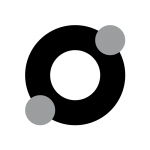All Activity
- Past hour
-
waheedkhannewid started following Stacking effects
-
andrewr138358 joined the community
-
elpromas joined the community
-
LARRUSSO joined the community
-
DaniGomes24 joined the community
-
Michael9195 joined the community
-
abhishekg joined the community
-
martinhayward910 joined the community
-
timlickteig joined the community
-
ktfreeland joined the community
-
natej1livecom joined the community
- Today
-
different EQ. check your global EQ. I've been using the Helix since 2.8 and never had any sound changes during an upgrade.
-
Judge yourself. Just a few tones, 3 Samples , each 292 followed by 370. 1. Factory 1-001 , 2. Some Dire Straits patch from somewhere , 3. Factory 1-072. In my ears 370 sounds much flatter, crackling and shrill, 290 richer, warmer and more natural. https:/rjkole.com/p_temp/Helix.wav All samples have been normalized. Ok, 370 to 371, my mistake, but may be interesting how things change sometimes.
-
SO now i have it on a blank preset and still not getting my "true amp sound" its like the distortion isn't coming through and none of my amp controls affect the sound at all. So then I hit the bypass on the line 6 effects unit and still same thing...no true amp sound...and amp controls don't affect the sound including volume and gain....So it must be the way I have everything routed,,,Doesn't seem like how I have everything in HX edit is the issue I have guitar>Stomp input(L Mono) Stomp L Mono output > Amp return stomp L mono return> Amp Send Stomp Stereo Send > AMP input
-
I believe the original premise of this topic was: Upgrading from 3.7 to 3.7.1 sounds different. It seems to have morphed into "things sound different between 2.x and 3.7.1". I understand why somebody doesn't want to deal with redoing all of their presets, but we shouldn't be surprised that it sounds different. There are a massive number of changes implemented and I don't believe Line 6 implied "everything will sound the same".
-
Mind sharing some comparison clips to convince a doubting spirit like me?
-
Today i sat down for many hours comparing 292 with 370 using the exact same settings, same speakers, same guitar, same phrases with the same 10 different presets (from 292 and settings backup) on both firmwares, eq is OFF of corse. The recodings clearly showed a difference. 370 against 292 produces way more treble (hiss, hsss,sss) which may gives the impression of a somehow "clearer" sound, but makes certain presets sound rather like a behringer vamp then a helix . 292 sounds way warmer to me (slight lower trebble or upper mid boost), the antialiasing is there but not in the way. I do not know what Line 6 did, but 370 sounds definatly worse then 292. Too much sss hsss, shhh, certain presets sound rather flat compared to 292. 370 sounds like the signal goes through a slight final compression with a misaligned exiter. I have no idea when these "changes" have been introduced, so ill stick with 292 for now. Dont really have the nerve to try out 196 different firmwares in order just to sneak a few new effects. For the everage or new user the difference may be not noticable,but when comparing recordings side by side you clearly notice the difference. The difference is less noticable on presets with lots of delay and reverb, but rather on tight dry presets which are supposed to sound clear. 370 seems to overdo it somehow with "fidelity" which you (i) dont really need in the studio. You may try a Strat with a Dire Straits preset in position Pickup 4 then you may know what i am talking about. When i first tried 370 i immediately had the impression of beeing something not right, now i know for shure. The only positive thing about 370 i could discover soundwise was less antialiasing like descibed IIRC around 350, heights sound cleaner, but there are too many of them unfortunately.
-
Thanks, guys. I’ll have a play later
-
Just use a Send L block in front of the cab block. This way the signal for the power amp / physical cab is on the Send Out.
-
There are likely several ways. My first thought is to use a split path preset with the cab sim alone on Path B. Split your paths just before the Output blocks. Path A output will use USB 1/2 and the Main outputs as usual for routing to your amp. Path B Output will use USB 3/4 so set the Record Input in your DAW to receive the incoming signal on USB 3/4. If you need details on how to set up a split path with a Path B output block consult the manual.
-
Since the footswitches on Helix are touch-sensitive, I have found that sometimes when I'm adjusting something (and wearing short sleeves), my forearm will briefly make contact with the TAP footswitch and trigger tempo view. Hope this is useful.
-
Line 6 Central https://line6.com/software/index.html requires MacOS Big Sur
-
Hello, I couldn't find an answer for this anywhere online - nor workout if its possible myself. I have my Stomp set up via 4CM but wouldn't mind being able to record via USB simultaneously - is it possible to have a cab sim set up that'll go to the daw via USB but not on the main out to a physical cab? KR
-
Leroyleava started following HX FX EXP Switch.
-
CraigBrige started following pod go presets
-
Edwardjep started following Live Ready Sound Marketplace Announcements
-
Altoncoelt started following assigning amp drive setting to switch
-
3.71 Update Failed Half-way through updating firmware
cruisinon2 replied to slowrower's topic in Helix
Fractal...;) Sorry, couldn't help myself, lol. Sadly I'm not the one to ask, but someone will likely chime in. Be prepared for IT- themed questions like what OS you're running, etc etc. -
Berrywah started following Steve Vai - Live Tone (Helix, POD Go, HX Stomp)
-
3.71 Update Failed Half-way through updating firmware
GuitarRedneck replied to slowrower's topic in Helix
I cannot install Line6 Updater on my MacBook. Is there another solution? -
Besides the jumpered channels in the HX I'd recommend to try the Divided Duo - use Drive1 as a bright channel gain and Drive2 is a normal channel gain. A trick is to set Drive2 to 0, then choose the amount of gain you want with Drive1 and finally add Drive2 back to add body/fullness - pretty cool. Also the Elmsley has the feel of an already dialed in jumpered amp.
-
For the record, my following support ticket has now been logged as a bug:
-

Wishful thinking for the next firmware update 3.71 and beyond!
brue58ski replied to Bgrudz2021's topic in Helix
You didn't get one?!? I love mine.- 24 replies
-
- vocal effects
- ts10
-
(and 4 more)
Tagged with:
-
It's just something I was reading about in reference to the Deluxe Reverb. Yes, there are amps that are jumpered but they are mostly Marshalls, not the Fenders. I figured both inputs were mixed before the power amp but, as we all know, the Helix doesn't have separate power amps. Thank you all for your responses.
-
Wishful thinking for the next firmware update 3.71 and beyond!
somebodyelse replied to Bgrudz2021's topic in Helix
As an amateur nobody, I've found that the internet is overflowing with people pretending to be something they're, clearly, not.- 24 replies
-
- vocal effects
- ts10
-
(and 4 more)
Tagged with:
-
Sialisshopdof started following Line 6 pod x3 live and Gearbox saving banks problem
-
If you get less "digital clipping" with less CH Vol then the amp model is not the problem.
-

HX Stomp: Digital Clipping on the Princeton
DunedinDragon replied to guitarboy_02451's topic in Helix
From your description it sounds like you're going into a mixing board? I'm basing that on your description : "L/R out via Line signal to my interface. Interface is set to line, gain is at zero on the interface. I have to volume knob turned all the way up on the HX." Normal inputs into a mixing board expect Mic signal levels which are WAY lower than Line level. The fact you have the gain set at zero, which I'm assuming means the 12 o'clock position, really means nothing. What matters is the signal level as shown by the mixing board signal lights on that channel, not the position of the knob. If this is the case it doesn't surprise me at all with the Helix main output maxed out that you'd be getting clipping on that channel. The first thing I'd do if this is all true would be to change the Helix output level to Mic rather than Line and see if that helps. -
Raymondwar started following Have any of you used Line 6 amplifiers?
-
I'm not sure if this will meet your needs or not. I frequently run two amp models simultaneously. I put a split block on path 1 and then an amp model on 1A and another model on 1B and then merge them after. I'm certain you could used two of the same amp model and then set them up differently to simulate a jumpered amp. I believe some amp models may have the jumpered option built in. Our local guru, Craig takes it a step further and adds EQ blocks to each model and alternates boost and cut bands. For example, he'll cut X at 120 Hz and boost Y at 120 Hz, then boost X at 250 Hz and cut Y at 250 Hz and so on up the scale. There is probably a thread somewhere on this forum covering that method. He says it makes a fuller sound but I have not tried it, so I cannot confirm or deny. My approach is to run two different amp models and set them up quite differently. One model, usually on path 1A, will be a higher power model and set it to a cleaner and stiffer state than the other. The other model, usually on path 1B, will be a lower power model and set for higher gain and spongier than the other. When they combine I get the clarity and spank and chime of a cleaner amp mixed with the grit and growl and sag of a dirtier amp. It works good for blues but it really excels at medium gain rock.



